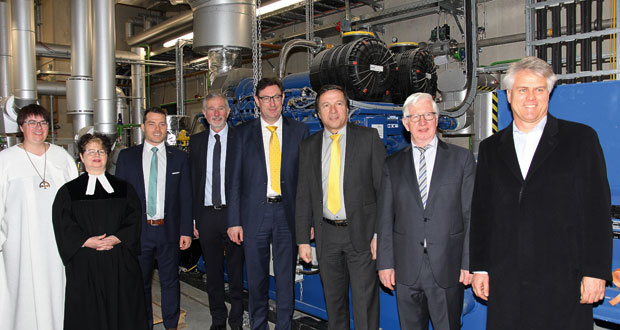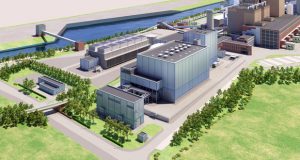STEAG New Energies GmbH, Saarbrücken/Germany, and the Zweckverband Geo-wärme Erding (Erding Geothermal Energy Association) are expanding the existing Erding 1 combined heat and power plant, which will enable up to 18 % of the total heating requirements of the Bavarian district town of Erding to be covered by geothermal energy in the future (Figure 1). This climate-friendly method will also supply the Erding thermal spa, the world’s largest thermal spa with around 1.8 M visitors per year.
With the expansion of the Erding 1 heating plant, the Zweckverband Geowärme Erding is taking account of the continuing rise in demand for climate-friendly district heating. Together with project partner STEAG New Energies, the association is now laying the foundations for even more households in Erding to benefit from a resource-saving district heating supply in the future. At the same time, the expansion of capacity will secure the further expansion of district heating in the city of Erding in the long term. The current supply (63 MW including the complete Erding thermal spring) is covered by heating plants 1 and 2. Without exception, the expansion serves to cover the planned further expansion to 75 MW in terms of generation.
Geothermal heat utilisation involves extracting the 63 °C warm thermal water from a depth of around 2,300 m and distributing it to the two geothermal heating plants and the Erding thermal spa. While it is used in the geothermal heating plants to ensure the supply of heat to the citizens of Erding, it is also used as bathing water following treatment in the thermal spa.
“The multiple use of the thermal water for the district heating supply of residential buildings as well as for the operation of the thermal baths is unique in Germany – we are very proud of this”, says District Administrator Martin Bayerstorfer, who is also Chairman of the Erding Geothermal Energy Association: “We are very satisfied that in STEAG New Energies we have a reliable partner at our side with whom we have been successfully promoting the expansion of our geothermal energy and thus the local energy turnaround in Erding for so long”.
Technically, the extension of the Erding 1 heating plant consists of a new compression heat pump and a new combined heat and power unit (CHP) with an electrical and thermal output of 1 MW each. The extension is completed by two new heating water storage tanks with a total capacity of 300,000 l of heating water. They serve to decouple production and consumption and can thus be used to optimise the operating time of the compression heat pump and the CHP unit and to cover peak loads. The measure amounts to a total investment volume of 7.8 M €.
The expansion will increase the capacity of Geowärme Erding to a future connected load of 75 MW, which corresponds to around 18 % of Erding’s total heating requirements. If the same heat output were to be generated in the conventional way, no less than 8 M l of fuel oil would be required. Seen in this light, Geowärme Er-ding will save 13,000 t/a of CO2 emissions in future.
This makes Geowärme Erding a real showcase project in terms of climate and resource conservation – and it has been for more than three decades, because this is how long the cooperation between STEAG New Energies and the city of Erding and Geowärme Zweckverband Erding goes back. The starting signal was given in 1994, when the construction of the district heating network was started together, before geothermal heating plant 1 went into operation in 1998. In 2009, due to the high demand for the environmentally friendly geothermal district heating supply, geothermal heating plant 2 was finally put into service.
“The geothermal heat utilisation in Erding is a real success model for all partners. Thanks to modern technology, all those involved and not least the climate and the environment benefit from a heat supply that is as environmentally friendly as it is reliable”, says Thomas Billotet, Managing Director of STEAG New Energies, who is pleased with the successful completion of the project. (STEAG/Si.)

